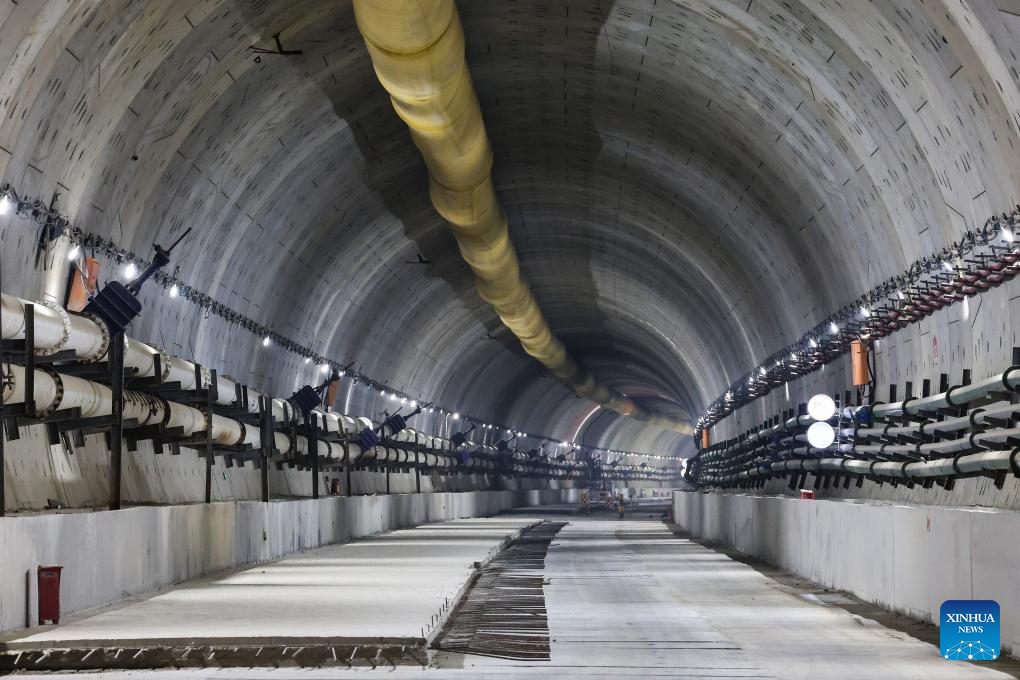BEIJING: An undersea tunnel at a depth of 68 meters beneath the Shantou Bay in eastern Guangdong province was successfully connected on Wednesday after a tunnel boring machine broke through rock with a diameter of 14.57 meters, nearly as high as a five-story building.
The connection marked significant progress in the construction of the undersea tunnel, setting multiple records in both domestic and international undersea tunnel construction.
The tunnel is the world’s first high-speed rail tunnel featuring a single bore with two tracks. With a designed speed of 350 kilometers per hour, it forms a crucial connection in the high-speed railway between Shantou and Shanwei in eastern Guangdong.
The tunnel, considered a key project along the railway, spans 9,781 meters. It is one of the most challenging tunnels under construction due to its complex geological structure and hydrogeological conditions, according to builders.
“The project team has advanced a series of design solutions, successfully overcoming multiple threats such as high-intensity earthquakes, dense active faults, extremely high water pressure in the sea area, highly corrosive seawater and extremely complex strata,” said Huo Fei, chief designer of the Shantou Bay undersea tunnel project at China Railway Design Corp.
The tunnel must traverse 17 fault zones in a high-intensity seismic area with an 8-degree magnitude, including eight active faults, while withstanding the dual pressures of extremely high water pressure on the seabed and highly corrosive seawater.
To ensure the tunnel can withstand the immense pressure of seawater, the project team conducted calculations and analyzes to understand the pressure state of seawater during earthquakes. By carrying out directional grouting construction from busy shipping lanes in the bay to the seabed, the team reduced water seepage and pressure in the tunnel, setting a precedent for high-precision, ultra-high-pressure grouting at a depth of hundreds of meters for railway tunnels.
To minimize the impact of earthquakes on high-speed rail operations, the team developed flexible and expandable damping joints at tunnel segment joints and a flexible isolation layer that resists water pressure and absorbs seismic energy.
“The design allows the tunnel to remain stable during earthquakes,” Huo said.
Faced with the high corrosiveness of seawater, engineers proposed a comprehensive waterproof and anti-corrosion defense system that includes pressure reduction, integrated waterproofing and high-strength crack resistance, according to Huo. –The Daily Mail-China Daily news exchange item






